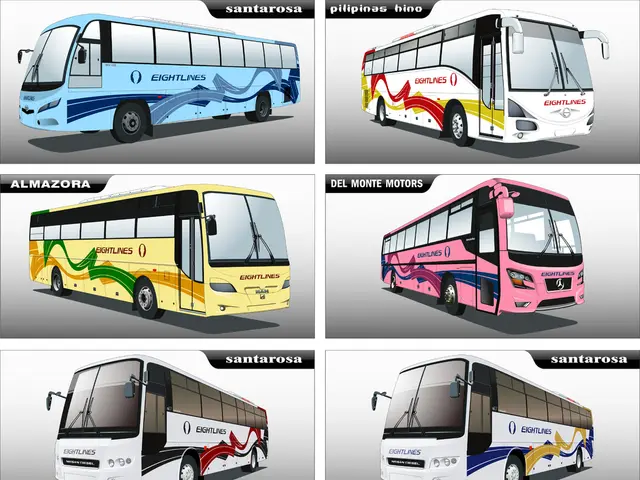U.S. Nuclear Submarines: Classifications, Weapons, and Deployment Sites
The United States Navy operates one of the largest and most technologically advanced submarine fleets in the world, consisting of four classes: the Ohio, Los Angeles, Seawolf, and Virginia classes. This article provides an overview of these submarine classes, their roles, and key features.
The Los Angeles Class: A Legacy of Power
The Los Angeles class, commissioned from 1976 to 1996, forms the backbone of the U.S. submarine force. Designed for anti-submarine and anti-surface warfare, mining, and other missions, these submarines have been a cornerstone of the U.S. Navy's underwater capabilities. There are three modified versions of the Los Angeles class, with a total of 23 submarines currently in service.
The Ohio Class: The Nuclear Triad's Backbone
Developed from 1972 and built between 1976 and 1997, the Ohio class submarines are the backbone of the U.S. Navy's sea-based nuclear triad. Each Ohio-class submarine could carry up to 20 Trident II D5 ballistic missiles. Currently, 14 submarines of the "Ohio" class are equipped with Trident ballistic missiles for nuclear deterrence, while four are converted for Tomahawk cruise missiles.
The Seawolf Class: Countering Soviet Submarines
The Seawolf-class submarines were built to replace aging Los Angeles-class submarines for countering Soviet submarines of Project 941 "Akula" class. There are only three Seawolf-class submarines in service with the U.S. Navy, each equipped with eight torpedo launchers, capable of carrying up to 50 torpedoes or missiles.
The Virginia Class: Modern Fourth-Generation Attack Submarines
The Virginia-class submarines are the most modern fourth-generation attack submarines of the U.S. Navy, replacing aging Los Angeles-class submarines. These submarines are equipped with vertical launch systems, Tomahawk cruise missiles, and MK-48 torpedoes. Currently, 23 submarines of this type are in service, based at Naval Submarine Bases in Norfolk, Virginia; Groton, Connecticut; Pearl Harbor, Hawaii; San Diego, California; and Guam.
Modern variants of the Virginia-class starting with SSN 803 are equipped with a Virginia payload module, increasing the number of "Tomahawks" by 28. The construction of two to three "Virginia" class submarines per year is planned until 2043 to expand the U.S. submarine fleet.
The Future: The Columbia Class
The U.S. plans to replace "Ohio" class SSNs with more modern "Columbia" class submarines starting from 2030. The Columbia-class submarines are designed as stealthy strategic platforms with fewer vessels than their Ohio predecessors but with superior technology in propulsion, missile deployment, and combat systems.
The Columbia-class features a new S1B nuclear reactor core designed for life-of-the-ship operation without requiring mid-life refueling, significantly reducing maintenance downtime. The propulsion system is turbo-electric, with the S1B nuclear reactor generating electricity that drives a permanent magnet motor, improving operational reliability and acoustic stealth.
The Columbia-class also incorporates advanced acoustic quieting technologies, modular construction for easier maintenance and integration, and the Submarine Warfare Federated Tactical System (SWFTS). SWFTS unifies sonar, fire control, and imaging into a single, integrated combat system, enabling improved situational awareness and combat effectiveness.
In summary, the Columbia-class submarines are designed as stealthy strategic platforms with fewer vessels than their Ohio predecessors but with superior technology in propulsion, missile deployment, and combat systems, supporting the U.S. Navy’s nuclear deterrence posture well into the mid-21st century.
The Remaining Tactical Submarines
The remaining 53 tactical submarines of the other three types are multi-purpose attack submarines, providing versatility and flexibility to the U.S. Navy's underwater operations.
A Look to the Future
The U.S. Navy continues to invest in its submarine fleet, with plans to construct two to three Virginia-class submarines per year until 2043 and the introduction of the advanced Columbia-class submarines starting in the early 2030s. The U.S. submarine fleet, with its diverse range of capabilities, remains a critical component of the U.S. Navy and the nation's defence strategy.
The main manufacturers of U.S. submarines are Electric Boat (a subsidiary of General Dynamics) and Newport News (part of Huntington Ingalls Industries). In 2021, a trilateral defense agreement was reached between the U.S., the United Kingdom, and Australia (AUKUS), providing for the sale of three to five Virginia class submarines to Australia by the early 2030s.
The New Jersey submarine, the first designed and equipped with women's physiological needs in mind, was launched in September 2024, marking a significant step forward in ensuring the U.S. Navy's submarine force remains inclusive and representative of the nation it serves.
- In the realm of general-news, the U.S. Navy's submarine fleet also includes the latest tech in weather systems, enabling them to navigate underwater efficiently in various weather conditions.
- The sports section might feature a friendly competition among the U.S. Navy's submarine crews, with the Virginia Class boats incorporating advanced technology to stream sports updates in their underwater operations.




